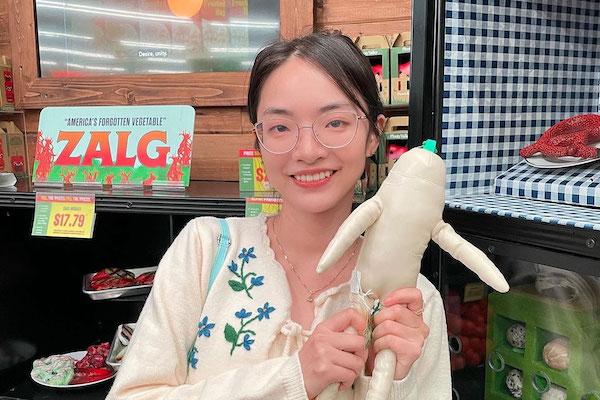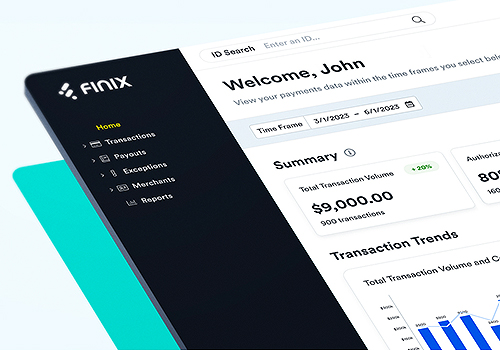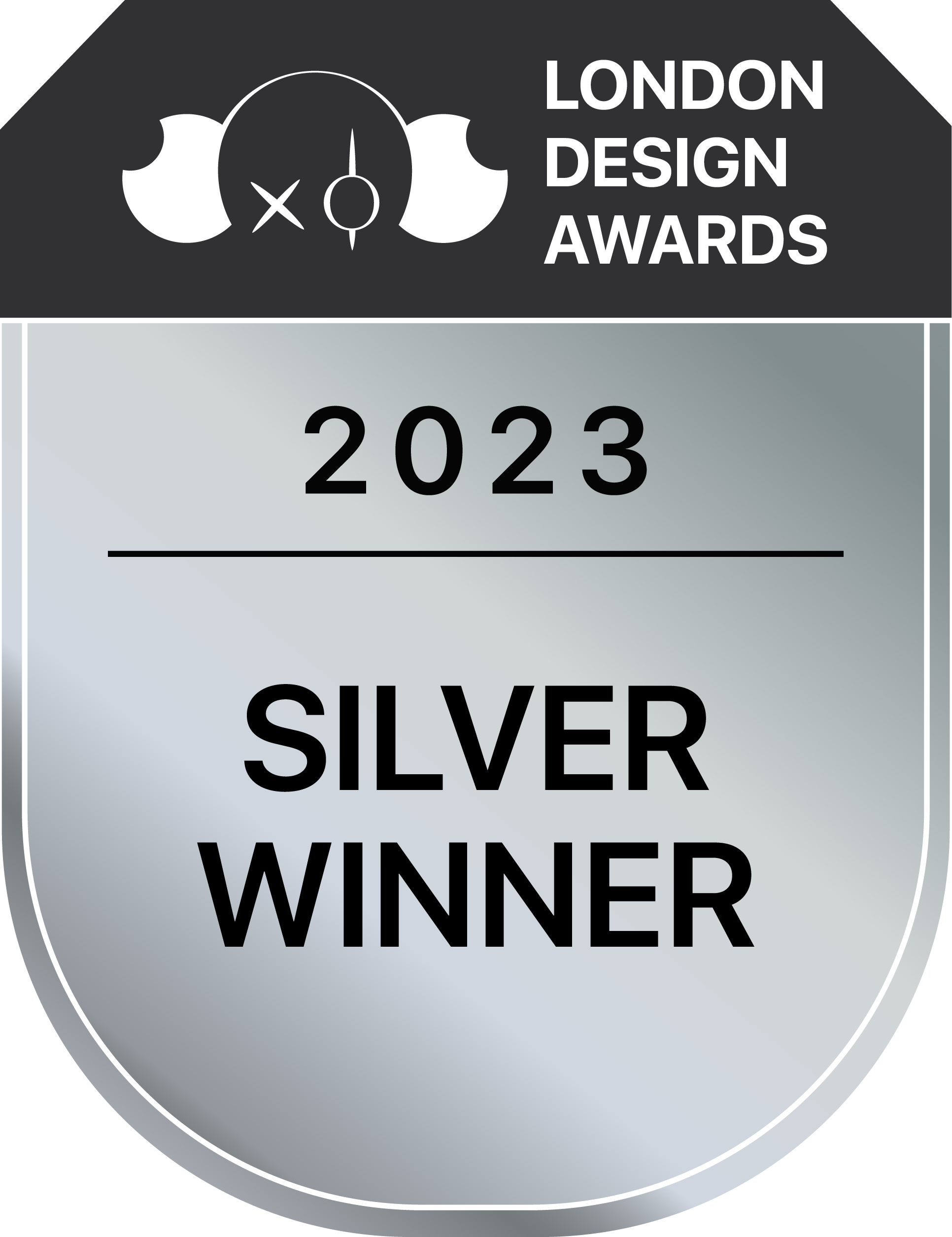
Mengzhu Ouyang
1. Please give us a brief bio of yourself and your design background.
I am Mengzhu Ouyang, and I also go by Olivia. I
2. What made you become/why did you choose to become a designer/artist?
Curiosity has always been the biggest driver for me, from the very beginning of my design career to today. Compared to electrical engineering, human-centered design allows me to get closer to the end users. It gives me the opportunity to optimize their experience and answer questions on why certain interactions or visual patterns work or don't work. I always enjoy collaborating and bouncing ideas off of all the great talents I work with who have various backgrounds. Working as a designer is a dream come true for me.
3. Tell us more about your agency/company, job profile, and what you do.
I currently work at Finix, a leading payments technology provider that enables businesses to accept and send payments online or in-person. From startups to publicly traded companies, innovative software platforms, marketplaces, payment facilitators, and standalone merchants use Finix to process payments, eliminate manual workflows, enhance customer experiences, and quickly grow revenue. As a product designer, I lead projects across different payment lifecycles to craft intuitive dashboard workflows so our customers
4. What does “design” mean to you?
To me, design means problem-solving. It requires identifying the problem and solving it through user research, brainstorm sessions, and validations. Design requires user testing to reach the best solution within a given context. I never consider design to be a creative secret that only designers own. I use design thinking both in and out of work, and constantly share my thoughts with other people to reach the optimal solution.
5. What’s your favorite kind of design and why?
I often get fascinated by great service design experiences, such as the IKEA showroom tour, an immersive museum exhibit, and the experience-enhancing Disney waiting lines. I love analyzing the careful considerations designers made at each user touchpoint and I constantly get inspiration from great designs in my daily life.
6. How did you come up with the idea for your award-winning design?
Historically, legacy providers have failed to keep up with the pace of innovation in the payments industry. Their platforms simply were not designed for new forms of commerce such as marketplaces, SaaS platforms, and multi-merchant models. Most payment companies today are actually built on top of one or more legacy payment processors and are limited in terms of the quality of the infrastructure that they're built on.
This is one of the reasons why Finix was built from the ground up rather than relying on legacy systems. Finix designs for ultimate flexibility and optionality so businesses can create the unique payments experiences they need to blend seamlessly with their business operations. We built our dashboard from the ground up to provide customers with the best user experience possible.
7. What was your main source of inspiration for this design?
We conducted user testing and integrated payment expert insights into our designs. I also researched productivity tools to understand effective ways to help users focus, reduce distractions, and gain confidence in each action.
8. Do you think your country and its cultural heritage has an impact on your design process?
I was born and raised in China where the financial system is completely different from the United States. I believe this has always put me in a humble mindset to absorb as much as possible when starting any project. This is also beneficial to cross-functional collaboration and my process with design teams.
9. Congratulations! As the winner of the London Design Awards, what does it mean to you and your company and team to receive this award distinction?
We are honored to receive this recognition from the London Design Awards. It is a huge accomplishment for both the product design team and Finix as a whole.
10. Can you explain a bit about the winning work you entered into the London Design Awards, and why you chose to enter this project?
Redesigning our dashboard was a milestone for Finix, andup-leveled our user experience. Finix provides businesses with on-demand reports and at-a-glance snapshots of payments data right from the dashboard. Using intuitive design patterns, our dashboard prioritizes tasks, provides transparent payment analytics, and allows businesses to manage their payment operations seamlessly. This means businesses have access to all the important details about how their business is doing as soon as they log on
11. How do you think winning this award will impact your future as a designer?
Winning the award is a huge recognition for me and shows how important it is to focus on designing for user experience. I feel encouraged to keep driving user value through my work and continue to work with cross-functional teams to use design as a tool to enhance customer experience.
12. What are your top three (3) favorite things about the design industry?
My top three favorite things about the design industry are deep empathy, constant innovation, and close collaboration with others. As a designer, I find nothing more rewarding than witnessing users experience an
13. Where do you see the evolution of design industry going over the next 5-10 years?
I think artificial intelligence will have a significant impact on the product design landscape. Over the next 5-10 years, I believe AI-assisted tools will free up designers
14. What advice do you have for aspiring designers who want to create award-winning designs?
Regardless of the industry, team size, or tools that you use, solving problems with the user in mind will always guide good design. The best advice I can give is to keep advocating for users throughout the entire process. A great solution should follow!
15. What resources would you recommend to someone who wants to improve their skills in the design industry?
The design community is the most inviting community that I have ever seen. Whenever you have a question, don
16. Tell us something you have never told anyone else.
I have thalassophobia.
17. Who has inspired you in your life and why?
I am super grateful to be constantly inspired by the people I love. Growing up by watching tons of documentaries with my dad, I formed the habit of asking a lot of questions and it has helped me to always stay curious. During my design career, I
18. What is your key to success? Any parting words of wisdom?
Always focus on the present. When doing the actual work, I don
19. Which THREE (3) friends/peers would you nominate to participate in the next London Design Awards?
I would highly recommend my other friends working in startups to participate in the London Design Awards to show their passion for customer obsession!
20. Do you have anything else you would like to add to the interview?
Thanks IAA for providing this great platform for the Finix design team to showcase our customer-first mindset!

